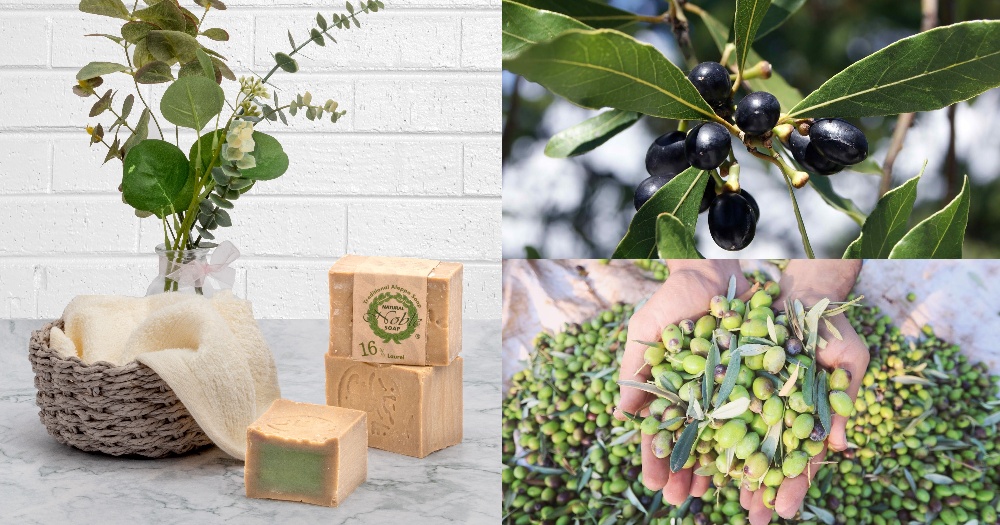Rinse, lather, rinse, repeat.
It’s almost as if this hand washing routine has become the new norm ever since Covid-19 hit our shores.
And to be fair, should it not?
We wash our hands because it kills bacteria, prevents the transmission of germs, and leaves our hands feeling cleaner than before.
And while all soaps may be created for this same purpose, some soaps just might be more effective than others.
Join me as I unravel the history and cleansing wonders of Aleppo, one of the world’s oldest hard bar soap known to mankind.
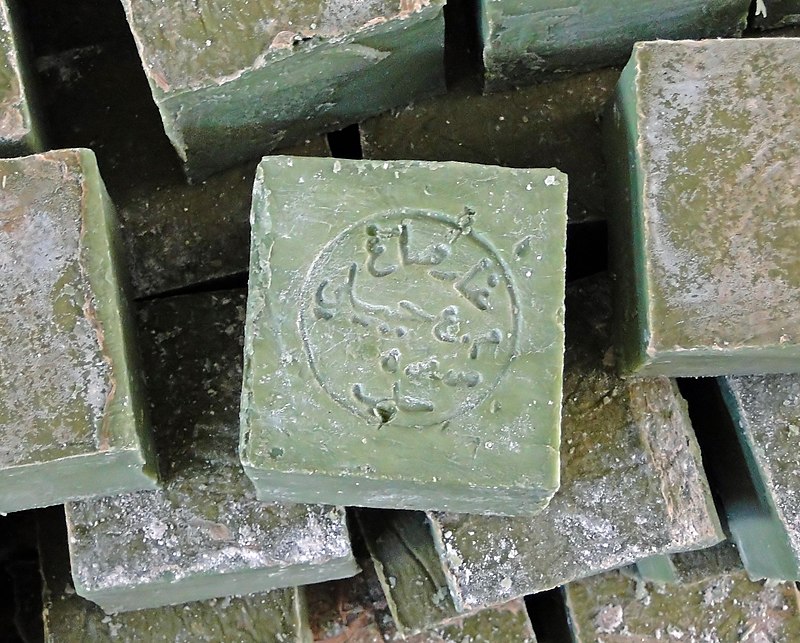 Traditional Aleppo soap. Image via Bernard Gagnon on Wikipedia.
Traditional Aleppo soap. Image via Bernard Gagnon on Wikipedia.
How old is the Aleppo soap?
The origin of the Aleppo soap is open to speculation and hypothetical suppositions of its legendary history.
Soap manufacturer Noble Soap purports that it was first created in the East Mediterranean region back in 2400 BC, while others have gone so far as to claim that it was first discovered in the city of Aleppo, the second capital of Syria, some 2,000 years ago.
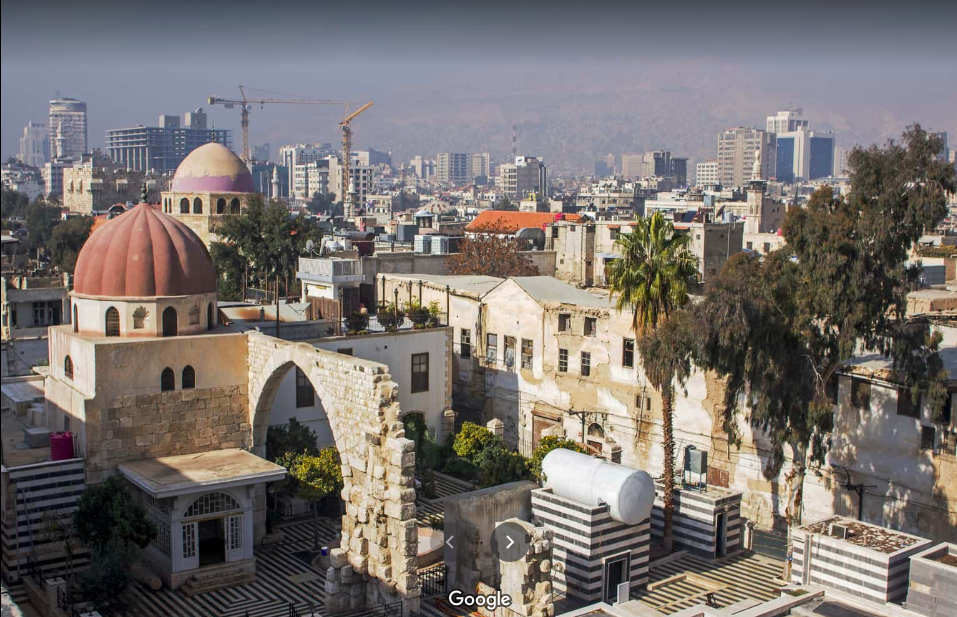 Aleppo, Syria, Jan. 2020. Image via Google Maps.
Aleppo, Syria, Jan. 2020. Image via Google Maps.
It is also commonly thought that the soap travelled down west to Europe after French crusaders discovered it and decided to import it over.
And after the soap became famous in France, it soon spawned numerous soap factories around the Mediterranean. Cool.
Today, most Aleppo soaps are exported worldwide from Syria and Turkey, with a majority clientele in Europe and Asia.
What is Aleppo soap made of and good for?
Free of fragrances, additives and colouring, the Aleppo soap is handmade with only four ingredients: olive oil and laurel oil, water and lye.
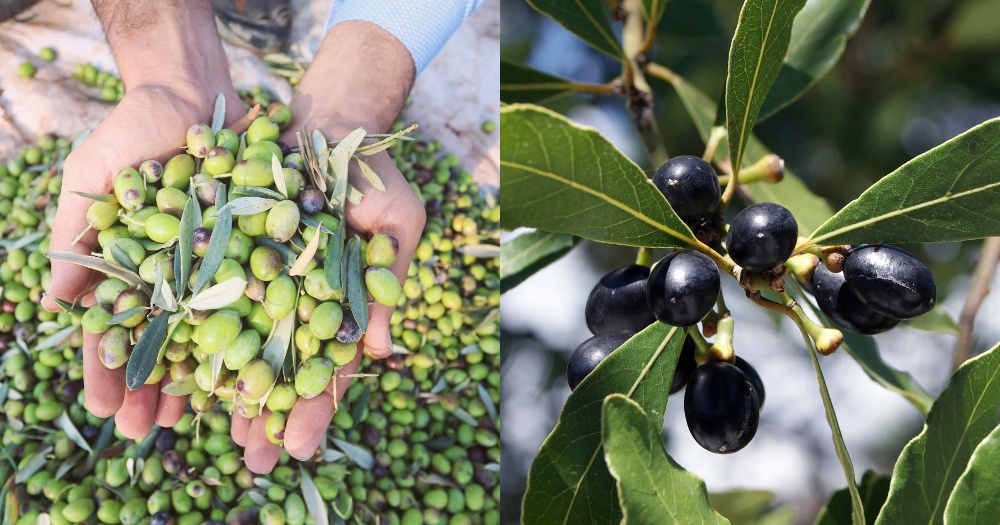 Olives and laurel fruits. Image via Noble Soap.
Olives and laurel fruits. Image via Noble Soap.
Apart from being a great antioxidant, olive oil provides the soap with omega 3, Vitamin E and many other nutritious elements that are great for one’s skin.
It is also gentle and moisturising, with a mild anti-inflammatory effect that helps in reducing redness and irritation.
On the other hand, the soap’s magic ingredient - laurel oil - is a strong antibacterial, antiviral and antifungal agent that doesn’t over-dry one’s skin.
According to medical journal The Lancet, laurel oil is also what makes the Aleppo soap so potent when it comes to treating various skin issues such as acne, eczema, psoriasis and herpes, as well as scalp problems like dandruff, seborrhoeic dermatitis, and others.
How is Aleppo soap made?
Modern Aleppo soaps are still made in the same way that they have always been made since generations ago - by cooking the olive oil and adding the desired amount of laurel oil.
While the amount of laurel oil added determines the value and price of the soap, the soap’s quality will depend on how good both the ingredients and manufacturing process are.
The production of Aleppo soap is therefore a highly skilled craft that requires quality ingredients, expert artisans and extreme attentiveness.
Production is also limited to the cold months from December to March, after the olive harvest.
Here’s a quick breakdown of the entire process:
Once the olive oil and laurel oil have been combined, this mixture is poured into basins where they are left to chill and harden, in order for the soap’s elements to properly bond together:

And when the basins are newly filled with the liquid, shiny, silky soap, they are reminiscent of swimming pools full of sappy green, much like this:
 Basin filled with soap. Image via Noble Soap.
Basin filled with soap. Image via Noble Soap.
After the soap mixture is congealed and becomes more firm, they are then cut by hand with special tools.
And once each individual bar of soap receives a signet by hand with a metal stamp, it is then ready to be stored to dry:
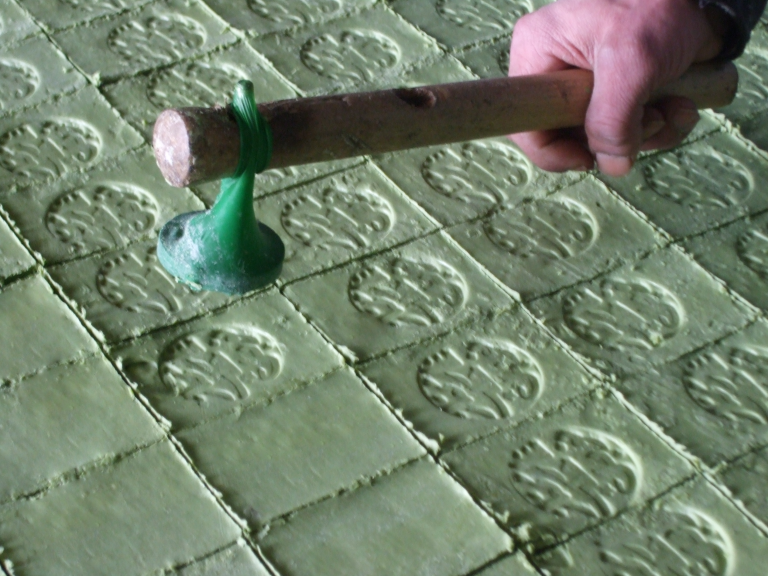 Soap stamping. Image via Noble Soap.
Soap stamping. Image via Noble Soap.
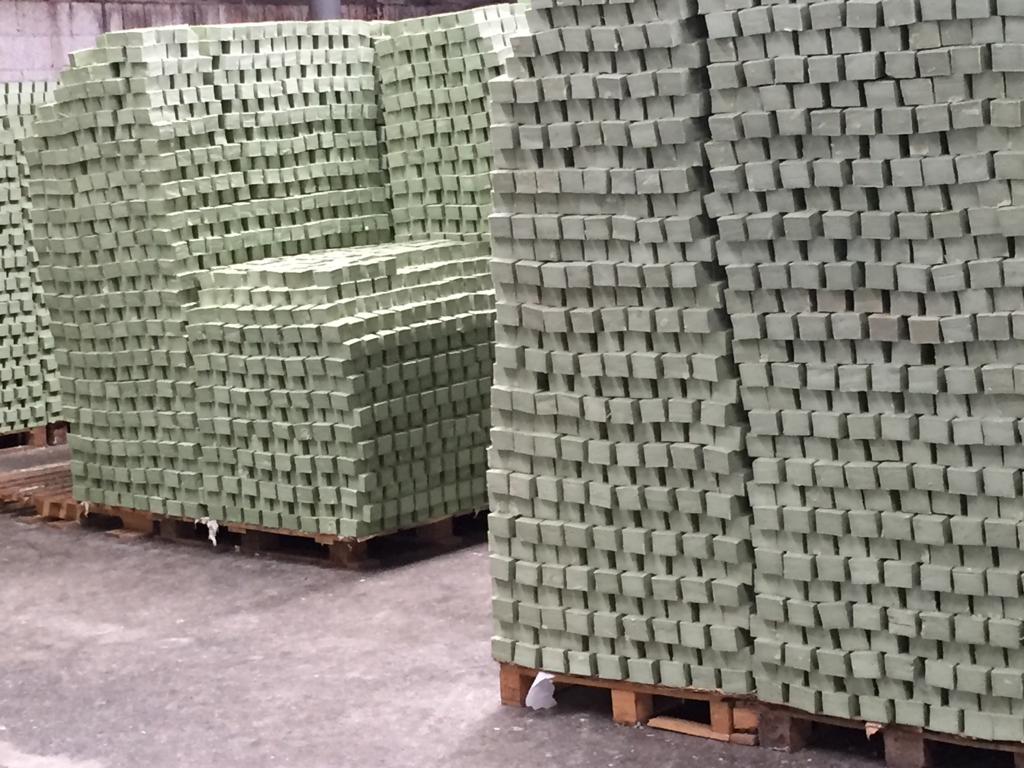 Freshly cut Aleppo soap in stacks. Image via Noble Soap.
Freshly cut Aleppo soap in stacks. Image via Noble Soap.
Do note that the colour of each Aleppo soap will gradually change from an intense grassy green to a light yellow, and then a golden brown over time:
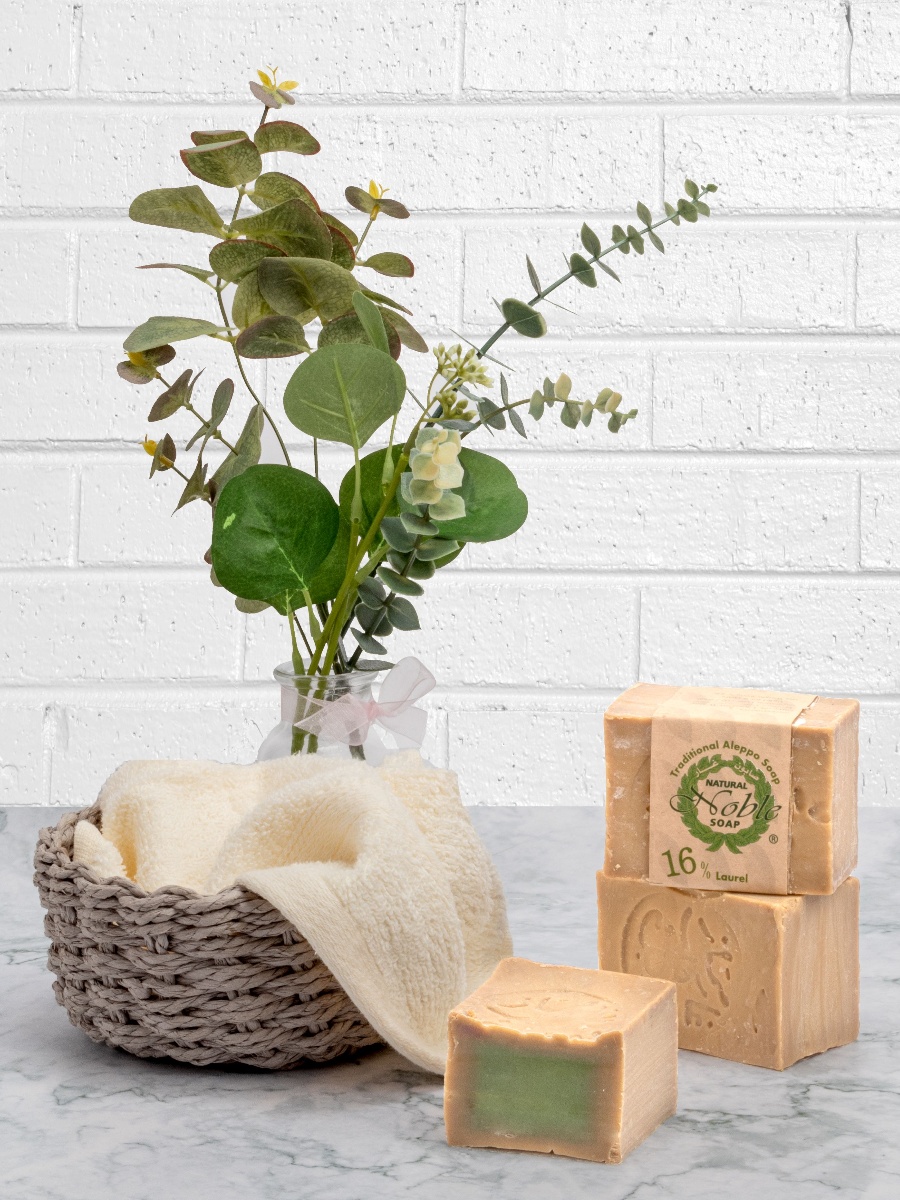 Aged Aleppo soap. Image via Herbal Pharm.
Aged Aleppo soap. Image via Herbal Pharm.
The thickness of the soap’s yellow surface therefore indicates its age.
Despite this, however, the inside of the soap will always remain green.
Where can I buy Aleppo soap?
If all this talk about Aleppo soap has made you want to try it out for yourself, you can get both the hard bar and liquid gel variation from Herbal Pharm’s online store.
Traditional Aleppo Soap 16 per cent Laurel Oil, 200g (S$18)
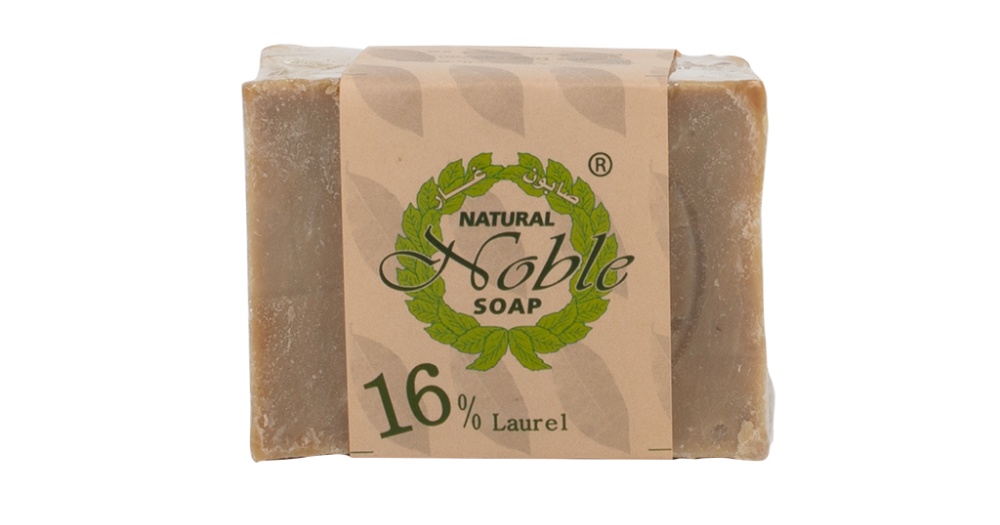
Made in Turkey, the Traditional Aleppo Soap with 16 per cent Laurel Oil is an all-in-one soap that is suitable for the face, hair and body.
Not only does the soap nourish one’s skin and hair’s roots, it also helps in delaying wrinkles and making one’s hair bright and soft.
Click here to add to cart.
Traditional Aleppo Soap 30 per cent Laurel Oil, 200g (S$27)
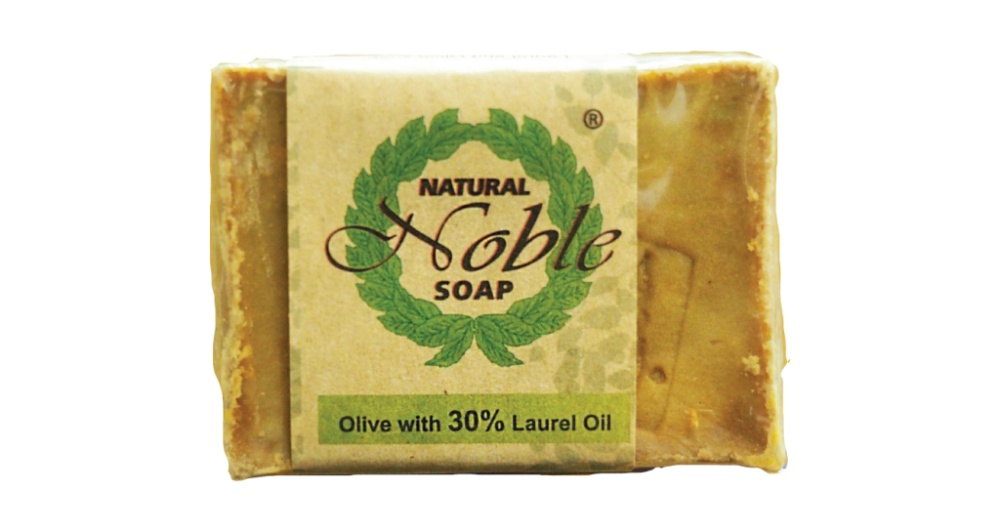
Boasting a higher concentration of laurel oil as its predecessor, the Traditional Aleppo Soap with 30 per cent Laurel Oil is suitable for users with severe but treatable skin conditions.
Click here to add to cart.
Aleppo Soap Shower Gel (S$12.50, S$24)
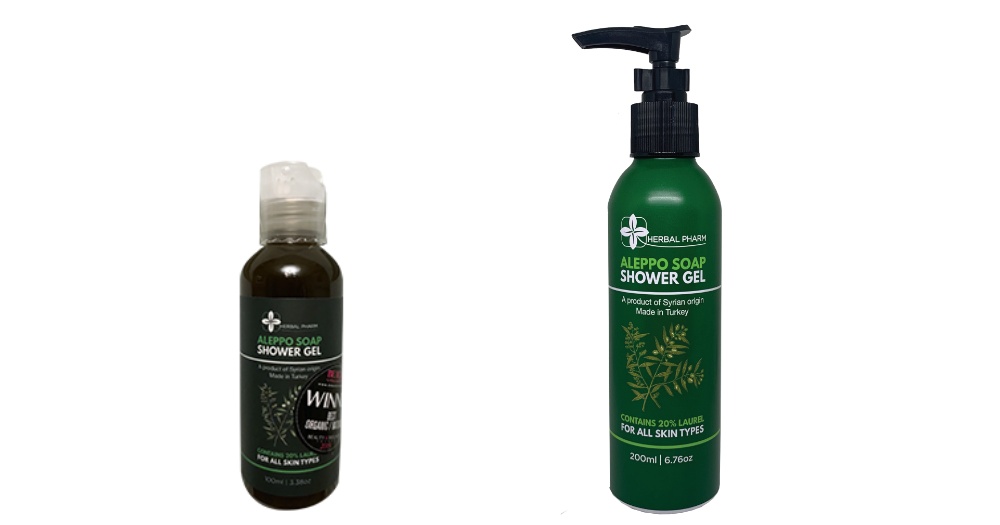
And if you want something that lathers even faster and is (arguably) more convenient to use, you can also opt for the Aleppo Soap Shower Gel, which comes in two sizes:
- Aleppo Soap Shower Gel, 100ml (S$12.50)
- Aleppo Soap Shower Gel, 200ml (S$24)
The best part? Herbal Pharm is currently having a special promo for the 100ml Aleppo Soap Shower Goal at S$9.60 per bottle, while stocks last.
Click here and here to add to cart.
This sponsored article by Herbal Pharm made this writer want to try out the Aleppo soap.
Top image via Herbal Pharm
If you like what you read, follow us on Facebook, Instagram, Twitter and Telegram to get the latest updates.
